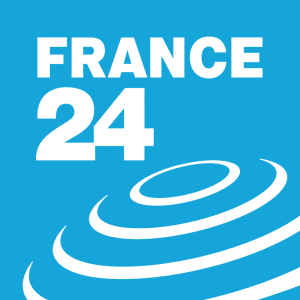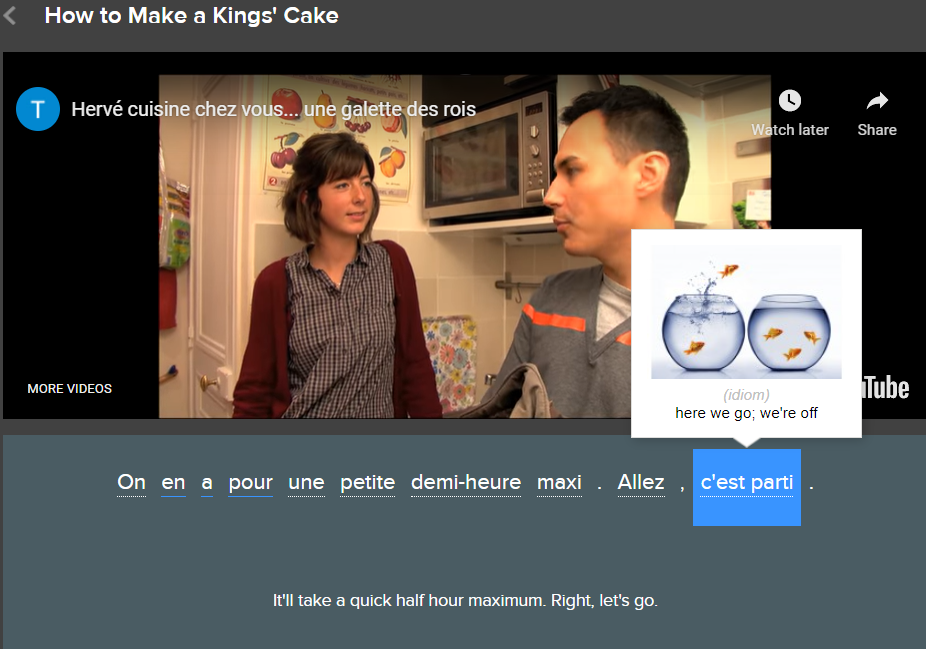
Advanced French: 22 Powerful Sites for the Best Lessons Online
Every day, you exercise your French language muscles, training yourself to flex them at will.
As you grow stronger, you’re better able to follow the language’s various twists and turns and to avoid its common pitfalls.
At an advanced level, you probably still need some guidance, but you also need to make your own way.
Here are 22 great resources for learning advanced French—all easily accessible online.
Contents
- Top Sites for Advanced French Lessons
- Tips for Studying Advanced French Online
- Benefits of Online Advanced French Courses
Download: This blog post is available as a convenient and portable PDF that you can take anywhere. Click here to get a copy. (Download)
Top Sites for Advanced French Lessons
Pure Native French Content
Learning from native content is the best way to improve your French in a natural way, and as an advanced French learner, you need fresh, reliable content daily. Here are six of the best sites for this:
1. France24
Price: Free
When it comes to watching French TV online, you have a lot of options, but none as consistently reliable as France 24.
True to its name, France 24 broadcasts French (and international) news 24 hours a day, 7 days a week. You can tune in at any time for the full experience of watching French TV, commercials included. This is truly one of the best resources for finding native content online, any time of day.
2. FluentU
Price: Monthly or yearly subscription; free trial available
FluentU is a comprehensive learning platform that teaches French through native videos, as taken from French movies, TV series, vlogs, and more. As an advanced learner, you can watch the same videos that native French speakers watch, and learn vocabulary in context.
All of the videos come with interactive subtitles. Hover over any unknown word to see the definition or click the word to add it to a personalized vocabulary list you can study later:
Plus, the FluentU platform has a built-in flashcard system and video dictionary, as well as speaking questions on the app that let you practice French pronunciation.
3. FranceCulture.fr
Price: Free
You may be familiar with France Culture primarily as a radio station, but there’s also tons of content to be found on their website, both in audio and text formats. You can search their page by category (literature, art, history, science, etc.), read articles and listen to clips or full episodes of previously broadcast programs.
If you’ve been learning French with audiobooks (and if you haven’t been, you really should start!), make sure to check out “Les bonnes feuilles” in the “Littérature” section, a series that features recently published authors reading their books out loud.
4. Le Monde
Price: Some articles are free; monthly or annual subscription needed to read all articles
Le Monde is one of the leading newspapers in France, and one of the leading providers of news content online. Their site doesn’t just feature articles, but also captioned slideshows and videos.
It’s updated frequently, and on every visit you’ll be presented with fresh material.
5. Popular on YouTube – France
 Price: Free
Price: Free
This YouTube channel will help you keep up with the biggest, freshest videos from France.
The channel only displays a few of the most popular videos at a time, so you won’t get overwhelmed. On the flip side, if you’re hungry for more, YouTube will recommend related French videos after you start watching this channel regularly.
You may have already heard about some popular French YouTubers like Cyprien and Norman. Another fun one is Studio Bagel, a channel that releases funny material on a regular basis, including parodies of movies and pop culture:
6. LanguageGuide.org

Price: Free
LanguageGuide.org has a short yet interesting list of interactive stories at the advanced level (scroll down to the bottom of the page).
The great thing is that all the readings come with audio. Put on your headphones and listen along a few times. Once you get comfortable with a particular reading, why not try recording yourself reading the text out loud?
This is an excellent method to combine your reading and pronunciation abilities, and it works. All of the readings are medium-length, and the vocabulary is comfortable but also challenging for advanced learners.
Online Advanced French Classes
As an advanced learner, you’ll be much more independent, but you’ll need some help and structure, too. The following sites for advanced French lessons provide just that through online courses:
7. Coursera

Price: Free to enroll, $49 for certification
Currently, Coursera offers over 40 university courses in French (along with French subtitles) for free. This means that you can sign up for a course in history, photography or accounting—whatever happens to interest you, really.
As a plus, for $49 you can get university credit and certification for certain courses.
Some interesting courses you can take include L’avenir de la décision: connaître et agir en complexité (Future of Decision Making: Understand and Act with Awareness) and Ebola: Vaincre ensemble! (Ebola: A Global Struggle!).
8. Français Authentique

Price: Around €49 to €199 for each pack of French lessons
For those of you advanced speakers in love with all that is French and Paris, this is the course for you. Set up by native Parisian French teacher Johan, this site has grown to provide a variety of course packages for French lovers around the world. Try out a few lessons for free, and if satisfied continue through a course package.
This is great for those advanced learners looking to perfect their accent, and you can dedicate as much or little time as you can.
9. Zut!
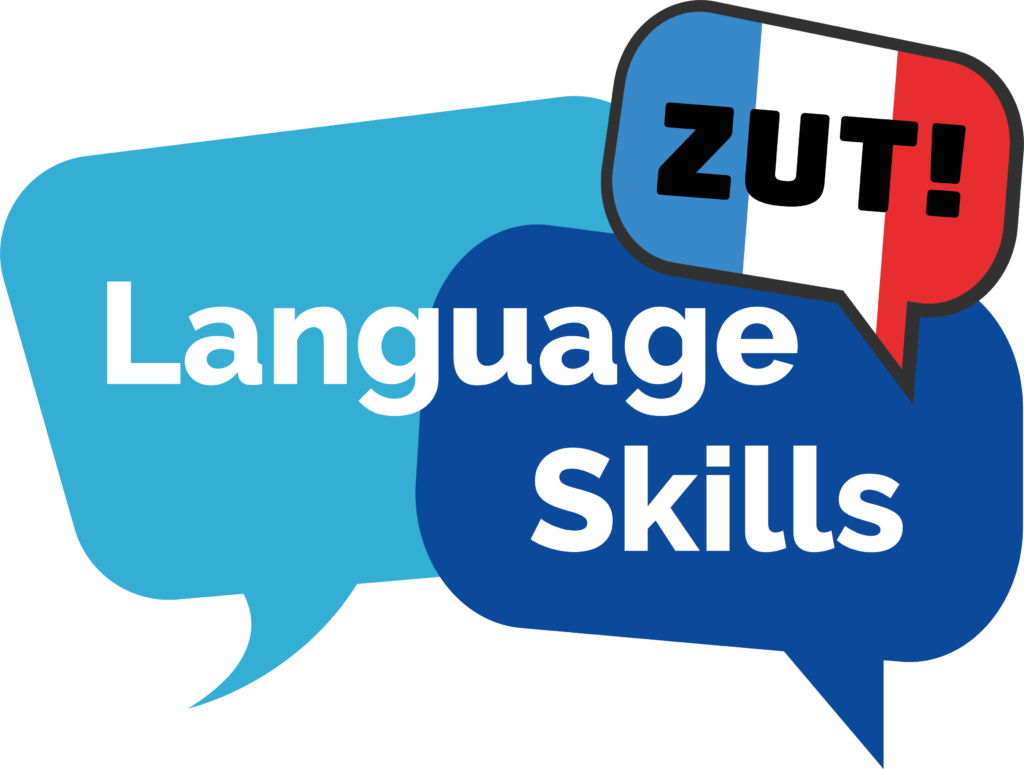
Price: Free to access at certain hours; otherwise, needs an annual subscription
Zut! is a site that was founded by a language teacher to provide accessible material for both teachers and learners.
The lessons on the site can get very challenging. They focus on topics that tend to be good for discussion, including current event themes like racism and the French legal system. Each advanced lesson comes with exercises and listening resources.
Zut! also has a great compilation of external digital learning materials. Not only are there links to online French exams, but also learning schools, French pronunciation websites and interactive language games.
10. Bonjour de France

Price: Free
A website constructed entirely in French, Bonjour de France is great for advanced learners. It encourages its users to overthrow the comfort of translation, with an extensive list of readings at both the B2 (advanced) and C1 (expert) levels.
Each reading is accompanied by an interactive lesson that highlights important vocabulary, plus review questions to test your comprehension.
Aside from this, Bonjour De France also takes a long look at the history of French culture and significant French events. If you’re interested in French literature, architecture or music, you’ll find something here for you.
11. Frantastique

Price: Monthly subscription, with a free trial
Frantastique is based around daily learning and immersion, with snappy 15-minute lessons.
Perhaps the best thing about the site is it adapts lessons to each of its students. After you take an initial test to gauge your language level, you receive daily exercises and materials directly into your inbox. There’s a new topic each day, and the lessons even follow a storyline.
Frantastique also offers personalized feedback. While it’s somewhat helpful just to get a score, gaining access to written explanations after being quizzed is one of the best ways to improve at a language.
12. French Classes
Price: Monthly subscription for the audio course
This site offers an elaborate French audio course made up of reading, writing and listening comprehension, accompanied by exercises d’application (review questions) for each activity. There’s an extensive preview too so you can try it out first!
The advanced course has 36 lessons. It includes typical expressions and cultural knowledge relevant to France and French living. One outstanding feature is the variety of writing styles the class incorporates, including idiomatic, journalistic, literary and review, giving you nice exposure to different tones in written and spoken French.
Advanced French Exercises and Quizzes
Aside from full-fledged courses, you can practice your French even more with these handy websites that offer exercises for advanced French learners. These test a wide range of skills, including listening, reading comprehension and verb conjugation, so dig in:
13. Passe Partout
Price: Free
Passe Partout is a language site formed specifically to help intermediate and advanced students with their oral comprehension. Even better, access to Passe Partout is completely free, so you can try it out right away!
Passe Partout is a specialized site focused solely on sequenced listening comprehension exercises. There is a total of 20 exercises, each including a video, vocabulary list and fill-in-the-blank sentences.
Once you finish an exercise, grab your language journal (get one ASAP!) and write out all the sentences. Then read them out loud to reinforce your vocabulary, writing and pronunciation.
14. Le Point du FLE
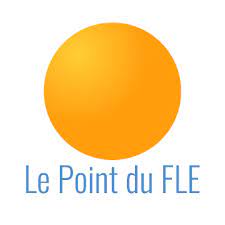
Price: Free
On this site, you can access class material for audio, writing and reading exercises. As a bonus, you can also access excellent information and learning activities on the Francophonie, French literature and national holidays in France.
Perhaps the most interesting element is the Francophonie section, because you can explore and train your ears to listen for and understand not only the Parisian accent, but Belgian, African and Quebec accents as well.
As all levels are listed together, make sure that you click only on activities listed as B2/C1/C2, as these are for advanced learners.
15. Banque d’Exercices de Français

Price: Free
This collection of French exercises by the Quebec government is a gold mine for the advanced learner. One of the (many) great things about Quebec is that a lot of public funding is allocated to creating high-quality content for learning French, which is one of its official languages.
Under the exercises pour les étudiants avancés (exercises for advanced students) section, you’ll find plenty of reading, writing and listening comprehension exercises.
You’ll also have access to an abundance of dictées (dictations), which are quite rare nowadays but key to perfecting French listening comprehension and pronunciation.
16. Français Facile
Price: Free
This site is quite basic-looking, yet has very practical advanced writing, verb conjugation and grammar review exercises. For the learner that has little time and wants to develop their writing skills, this is your site!
Have 15 minutes to spare? Do a pronoun or grammar review exercise. These courses are great to combine with in-person conversation classes!
Tutoring and Language Exchange
17. HiNative

Price: Free, with monthly subscription for premium features
On HiNative, you can have your writing corrected by native speakers who will catch not just outright errors, but other potential problems with your French—even if it’s just awkward phrasing.
This retains some of the comfort factor of knowing you’re not entirely on your own, but it’s still you who decides what to write and how often. You’ll get varying perspectives on French from those who speak it every day.
The platform also has a speaking feature in which you can get your pronunciation checked by a native speaker as well.
For more on HiNative, here’s an in-depth review.
18. Verbal Planet
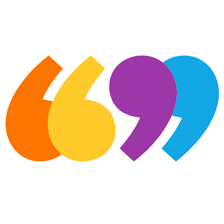
Price: Depends on the tutor; usually $20 to $40 per 40-minute lesson
Verbal Planet uses real teachers in its language lessons, making it one of the most comprehensive and useful language sites around. Advanced learners can get the one-to-one lessons that are so vital to progressing to full fluency and cover any specific language difficulties they might have.
Verbal Planet offers a lot of discounts, which increase according to the number of lessons that you sign up for.
19. Learn French at Home

Price: At least $40 per 50-minute lesson
Through Learn French at Home, advanced learners get access to tailored lesson plans and one-on-one interactions. Based around Skype or Zoom lessons, Learn French at Home brings French culture and native speakers directly to you.
Teachers are not only there for students to talk to and ask questions—each lesson focuses on a specific exercise based on your level, the program you sign up for and your individual goals.
Learn French At Home also has its own magazine and audiobooks, with topics like French family life, grammar and French politics.
Reference Websites and Quick Refreshers
These last three sites make up the ultimate online French reference trifecta! You can use them to find answers to questions about vocabulary, word usage, pronunciation and grammar:
20. WordReference

Price: Free
WordReference is an online dictionary that provides examples of word usage, as well as forums where people can discuss usage in specific contexts. Each word or phrase you type into the dictionary automatically draws up a list of forum discussions pertaining to that word or phrase.
Besides being a reference tool, WordReference has the added bonus of creating a whole community of French learners like yourself. Even if you go there for help, you might end up helping someone yourself, and making some new friends while you’re at it!
21. Forvo
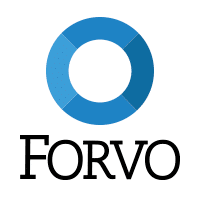
Price: Free
Forvo is a site that lets people all over the world provide native pronunciations in their own languages, along with information about precisely what region they’re from.
This means not only can you check the pronunciation of a French word, but you can also hear how that word is said in different parts of France or in other countries.
22. Bon Patron
Price: Free
Bon Patron is a French spelling and grammar checker that allows you to paste in a paragraph of French text and see if it contains any obvious mistakes. It highlights the incorrect parts of the text, and you can hover above each part for a quick explanation or suggestions for changes.
Like any automated tool, it has its limits, but it’s a good resource for advanced learners who will quickly be able to recognize their errors without a lengthy explanation.
Tips for Studying Advanced French Online
To stay on your toes, here are a few things to keep in mind as you study advanced French online:
Immerse in Native Content
At an advanced level, you need to get comfortable with using native content as your primary means of practicing French. This might sound scary, but really, it’s cause for celebration. Since you’ve mastered the basics, you can now refine your understanding of the language by exposing yourself to native material on a daily basis.
So listen to whatever music you want, read whatever book you want and watch whatever movie you want—even an action film.
It’s important, though, to make sure you’re actively engaging with the material.
That means you’ll need reliable reference resources to look up words you don’t know or check on your pronunciation. It also means you’ll occasionally still need someone looking over your shoulder, if only in the form of native speakers who can correct your language or clear up a usage issue.
Know What You Want to Improve
What are you good at? Whether it’s comprehension, writing or reading, you can pick a course that provides extra training in your strengths to really polish them off.
At the same time, know what you need to work on. Maybe you need to improve your speaking, brush up on your verb tenses or develop specific vocabulary. If you’re not sure, ask your conversation partner or teacher to help you identify your weak spots.
Once you have a good idea of what your strengths and weaknesses are, you can go ahead and pick a topic or specialization.
Being an advanced learner means you can begin taking university-level courses in French, or even specific language courses in your field. Or if you want to obtain general knowledge, pick a topic that interests you—you’ll be much more engaged when you’re truly interested.
Read Constantly
Reading in French is the key to diversifying and expanding your vocabulary. Reading out loud at the advanced level is great, as this will help you perfect the French phonetic structure.
Your reading skills need consistent training to become sharp. Aside from polishing your vocabulary, sharp reading skills will help you pick up sentence structure and also have a rapprochement (closer encounter) with French culture.
Master Difficult Grammar Points with Writing
I once had an excellent French literature teacher who told me that it’s nearly impossible to write in flawless French because of the intrinsic ambiguity and complexity of the language. He was talking about it being this way for everyone, even Francophones!
Nonetheless, it’s important to keep in mind that all languages pose their unique set of challenges. English has its own set of complexities. So when you’re feeling discouraged, keep in mind that it’s also difficult for foreign language learners of English to perfect their writing.
Here are a few key points to focus on in your writing at the advanced level:
- The agreement between verbs and their auxiliary verbs in the past tense
- Complex verb tenses
- Using the subjunctive properly
These areas pose difficulty for English speakers precisely because they do not exist to the same degree in the English language.
Listen Actively and Imitate
Listening comprehension might be an obvious element that all advanced learners need to focus on, but in French it’s also essential to stress the très très très (very, very, very) important aspect of pronunciation.
In French, as with English, one vowel pronounced incorrectly can throw off the meaning of a whole phrase or sentence, so you need to actively listen and repeat, listen and repeat, over and over, time and time again, to get that Francophone accent down once and for all!
Make a Well-Rounded Study Plan
As an advanced learner, it’s very important to align your learning with resources and courses that touch all four essential language skills: reading, writing, speaking and listening. Why? In order to activate all areas of your French and avoid gaps in your fluency.
Gaps can create a person with unbalanced language skills: For example, an individual who reads excellently in French but has virtually zero speaking skills or vice-versa. Not very practical, n’est-ce pas (don’t you think)?
Naturellement (naturally), as a language learner, you are interested in active and practical language learning.
Benefits of Online Advanced French Courses
With all of the info-packed resources above, going from advanced French to fluent doesn’t necessarily mean packing your bags and moving to a French-speaking location. There are a lot of perks to taking advanced French courses and lessons online:
- Flexibility: You can sign up any time and from anywhere. On a trip around the world? In an area with no quality language schools? No problem. When you sign up online, you start when you want from wherever you happen to be.
- Scheduling: When you learn online, you go at your own pace and set your own schedule. Let’s say you have no time during the week, or your mornings are quite busy. Don’t fret, because the course runs on your time and availability.
- Customized Content: Choose and combine content; find a conversation partner while you review advanced grammar or really polish your accent! When you’re online, you can choose what you learn in order to develop your strengths and ensure that you work on your weaknesses.
- Availability of New Topics: As an advanced learner, you can dig into the culture instead of sticking with daily life topics. Getting into native French content and courses online will help you learn about the real lives of native French speakers and even current events.
- Budget-friendly: Online means free or very reasonably-priced fees, which is great for the students on a shoestring budget, interns or for those watching their spending.
- Interactive: Just because you’re online doesn’t mean you are alone. With an abundance of activities and online conversation partners, you get direct 1-1 contact with native speakers and a community of language learners.
- Access Lessons Taught by Natives: Many advanced lesson platforms have teacher-student services where you can interact with a native speaker directly. Nothing beats this for asking about a specific vocabulary point or a niche grammar issue!
See how simple it really is to learn advanced French online? By exposing yourself to new lessons and material all the time, you’ll be staying engaged and training yourself to interact with the world from a French point of view.
Check the above websites frequently, and you can rest assured that your well of advanced French language content will never run dry!
Download: This blog post is available as a convenient and portable PDF that you can take anywhere. Click here to get a copy. (Download)
